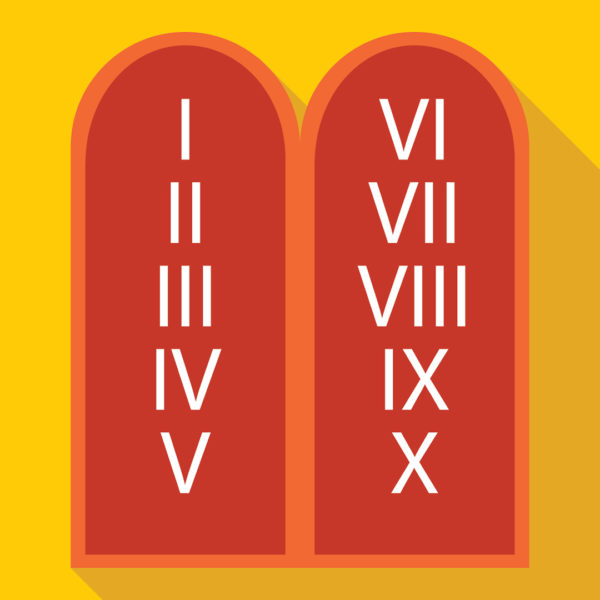Lent is a penitential season of the Church year. As such, it is a time for sober reflection on the reality of our sins and the burdensome cost that Christ paid to set us free. So, it is appropriate for Christians to take on a somber mood.
At the same time, we recognize that we worship a resurrected Jesus. That is, He has done the work of redemption and we are saved by the work of the Holy Spirit. The suffering is over, the battle won, and the victory sure.
What, then, is the purpose of observing Lent if we are forgiven and our eternal life is certain?
One reason is to combat the influence of the sinful nature. Remember that, while we are children of God in Christ, fully forgiven, we still retain our sinful nature, and will do so until the day we pass into glory. In our sinful nature, we desire to cast off Jesus Christ and the forgiveness that He brings. The sinful nature represents a temptation to return to life without Christ.
Who is God to tell me I am a sinner?
Observing Lent reminds us of the reality of sin and our need for the forgiveness that only Jesus can give. Secondly, we observe Lent because Jesus’ work of redemption accentuates His amazing love. In other words, we reflect on the grim reality of sin because it defines the profound beauty of God’s tender love for sinners.
It’s this idea that we want to emphasize for Sunday School students during Lent.
Connect Lent Practices and Traditions to Jesus
Help students to connect Lenten practices and traditions to Jesus’ work of love for sinners. Remember that application of ashes has its root in the Old Testament. Ashes represent death and a return of human flesh to the earth. Students should understand that, as man was drawn from the earth, in sin and death, and to it shall he return. Ashes make us mindful of the fragility and brevity of sin as a result of sin. Connect Jesus’ work to ashes. Jesus went into the earth after paying for our sins. He rose in order that the human form would no longer turn to ash, return to the soil. As we take ashes onto our foreheads, we remember that Jesus took sin upon Himself to bring an end to decay and death.
Colors are also important.
Purple can be deceiving. On one hand, purple symbolizes wealth and power. The dye required to produce purple cloth was rare and costly. As such, only the wealthy enjoyed it. In one sense, we employ purple during Lent to honor Jesus as King. On the other hand, we recall that the soldiers robed our Lord in purple in contempt. Jesus stood before Pilate and the assembly in purple, beaten, naked and humiliated. Deserving none of this, Jesus set aside His true glory to make us part of His eternal kingdom. A King died for me!
In the same way, explain why the pastors wear black. Jesus embraced the ugliness of my sin. On Easter, this is changed to glorious white!
Connect Lent to the Love of Jesus
These Bible verses are excellent tools to connect Lent to the love of Jesus.
Matthew 11:21 English Standard Version (ESV)
“Woe to you, Chorazin! Woe to you, Bethsaida! For if the mighty works done in you had been done in Tyre and Sidon, they would have repented long ago in sackcloth and ashes.
There were times when God chastised His people for their sins. However, it’s important that students understand that God’s judgment and wrath for sins fell squarely upon Jesus. Teach students the reality of God’s justice but help them to see that Jesus bore it fully in our place. God will ask nothing more for our sins.
Matthew 6:16-18 English Standard Version (ESV)
“And when you fast, do not look gloomy like the hypocrites, for they disfigure their faces that their fasting may be seen by others. Truly, I say to you, they have received their reward. But when you fast, anoint your head and wash your face, that your fasting may not be seen by others but by your Father who is in secret. And your Father who sees in secret will reward you.
There is certainly nothing wrong with practicing self-deprivation for Lent-giving up a beloved food or cherished activity. However, consider encouraging students to observe Lent by acts of mercy and service toward others. The passage above illustrates the danger of vain observances. Serving others is a blessed way to remember God’s loving work of mercy and service for sinners.
Make Connections through Activities
Hands-on activities also can be effective tools to emphasize God’s love in Christ amid the somber mood of Lent.
If your pastor uses cassock and surplice, borrow this to illustrate sin and the covering of Christ’s salvation. Another black garment along with a confirmand robe will work as well. Help students to connect their sins to the black. Jesus comes and takes that black on Himself. In return, He covers us in the pure white of His righteousness.
Create a Lenten calendar. Start with a white poster board. Taken a black poster board and cut windows into it, one for each day of Lent if possible. Lay the black over the white. Under each of the windows inscribe a Bible verse that highlights the love of Jesus, forgiveness and everlasting life.
The goal is not to water down the reality of sin and need for forgiveness. Rather, lead students to see how Lent points to Easter and highlights the sacrificial love of Jesus Christ.















